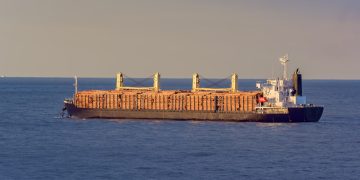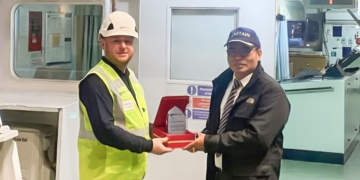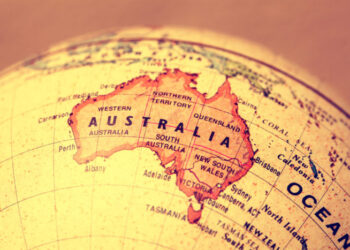–
Africa is a very diverse and complex security environment but for todays purpose I will focus on the maritime domain and the security trends in East as well as West Africa.
To start I would like to share a personal experience with you.
About 3 years ago, as a member of an armed security team onboard a VLCC transiting the HRA and within the IRTC Eastbound corridor, during my early morning shift I was scanning the horizon with my binoculars I noticed a target on the water coming right at us at a very high speed.
By the time I informed the officer of the watch and the Master as well as the rest of my team, the targets were three and getting closer by the second, by now they were at 1 NM.
As they approached it became clear that they had hostile intent.
There were 4-5 people on each skiff, weapons and boarding equipment were visible and identified.
Following the procedures we loaded our weapons and fired warning flares that made no impression on them.
All ships anti piracy measures were in use and the vessel was made a fortress.
All of the above did not really register with these aggressors and once they were under 400 m from us we fired two warning shots in the water.
Now that worked.
They turned around, slowed down, looked up to us in disgust, waved good bye and sped off to find another target.
The Master was so happy that he ordered a party that evening, mango juice and soft drinks were on the menu because thats how you party on a dry ship.
This story highlights the true dimension of piracy attacks and the stress that the threat of an attack causes to the ships crew.
From an office or land based perspective the value of being safe and secure at sea sometimes eludes us.
There are 2 major players in the region that obstruct the pirates capacity to perform successful hijackings.
The Navies are doing a very good job at patrolling, escorting, assisting vessels in need and disrupting pirate action groups once these are identified.
However the HRA of the Indian ocean is a vast area and the warships are limited, thus it is impossible for a naval asset to be present everywhere and provide assistance to each and every call for help.
The PMSC’s are the largest obstacle that pirates face.
Having an armed security team on board your vessel guarantees the vessel will not be hijacked and any attempt by an aggressor will be repelled.
To date no vessel with PCASP has even been taken by pirates.
So where are all these pirates now?
Somali based piracy is in hibernation until the environment in which it can thrive is present again.
The root causes of piracy have not been addressed in Somalia to the point where we can say that the trend will not emerge again.
On land in Somalia very little has changed and the capacity for the rule of law to be implemented is very small to non existent.
The efforts of the Somali Federal Government with the assistance of AMISOM and US lead air strikes have managed a strong blow to Al Shabab by pushing the group out of Kismayo and killing its leader. A week later Al Shabab has a new leader and a fresh agenda for the future.
Under reporting or over reporting of piracy related incidents in the HRA is a matter of heavy controversy.
The map below shows the approximate position of assets under our protection that have reported incidents in 2014.
This is the picture that the PMSC’s have in regards to the activity within the HRA this year andserves as a reminder that the phenomenon is not something of the past.

In 2014 we are witnessing a rise in attacks in the Gulf of Guinea and a steep drop of the number of attacks within the HRA.
If we look back and compare the past 3 years and the activity in the most pirate prone areas of the planet we will notice the following:
- 2011 – The HRA of the Indian Ocean experiences a tremendous amount of attacks and successful hijackings but in sharp contrast the GoG and SE Asia a very small number of incidents.
- 2012 – Less action in the HRA and a significant rise of incidents in the GoG and SE Asia
- 2013 – Far less activity in the HRA and an even larger number of violant attacks in the GoG as well as SE Asia.
- 2014 – We see a lot of suspicious approaches in the HRA but very few attacks and no successful hijackings while in the GoG despite the efforts of all involved states to tackle the problem, there is a significant rise in piracy related activity and the same applies for SE Asia.
There is a pattern to all this and this pattern is decoded easily by analyzing the differences in the approach to addressing the issue of maritime crime and piracy per region.
Since the approval of most flag states to allow PCASP on board their vessels and the standardization of the maritime security industry, it has become more and more common practice to deploy AST’s on board vessels transiting the HRA.
Once this was done and the capability of pirates to hijack vessels had been hindered, the other piracy prone areas were seeing a boom in the numbers of attacks and hijackings.
It is obvious that the work done by the PMSC’s in the HRA has proven to work but the same practise is forbidden in the Gulf of Guinea.
Nigeria being the major player in the region has set the rules and everyone else follows.
The rules that have been set are that PCASP are not allowed in Nigerian territory and that includes its waters as well
Nigeria exercises its territorial rights not only to the 12 NM limit but to the full extent of its EEZ and out to 250 NM.
Now this leaves a vast area with essentially no security for the vessels in the region.
The only option is to employ host nation security forces either to escort the vessel or by placing their personnel onboard the client vessel.
This entails many complications both legal and logistical.
HNSF are not trained or qualified and they are not insured to the level and extent that PCASP of well established PMSC’s are.
The maritime world being denied by the state of Nigeria the right to self defence is left with no other option than to take the risk of being attacked in order to proceed with the business.
The pirates and maritime criminals in the GoG are totally different to their cousins further east.
Somali pirates are just gangsters that want to make a quick buck and nothing more.
Nigerian pirates are very hostile, they have little respect for human life and their motives are not just financial but primarily political and sociological. One of these groups is called the MEND – the Movement of Emancipation of the Niger Delta, now this title says it all, they want to be emancipated through their actions.
We believe that when international navies and well established, serious PMSC’s are allowed in the region then we will see similar results to thous we have secured in the HRA.
The maritime family and the world in all needs to understand that in any case the threat is ever existent.
Take away the AST’s and the Navies and vessels will be hijacked again, seafarers will be held hostages again and lives-families will be broken.
Somali pirates being denied the opportunity to hijack vessels have turned to other maritime activities such as the smuggling of weapons and drugs across the Gulf of Aden and in to the Arabian peninsula.
By using motherships and high speed skiffs for this business they will occasionally perform soft approaches on merchants transiting the region in order to probe for reactions as well as maintain their level of understanding but also train new recruits on the tactics that have proven to be successful in the past.
If we look at the wider picture of the threat environment for the maritime domain we will see new elements as well as a repetition of past risks.
As extremism is on the rise in the wider region both in East and West Africa and actions of terrorist groups are a large part of the equation we believe that there is a heightened level of risk present.
With ISIL making advances to the south, the instability in Yemen and the imminent threat that the northern tribes pose in the country as well as the newly announced Indian subcontinent Al Qaeda group, the situation is very tense.
We all remember the USS COLE and the MT Limburg that were both attacked by skiffs loaded with high explosives in 2000 and 2002 in Aden,Yemen.
The attack on the French flagged MT Limburg resulted in the death of one crew member and 60.000 barrels of crude spilled in to the sea.
The repercussions of this act alone were enormous and the industry was blast shocked for months.
Terrorists want to make a big bang, they want to grab the attention of the entire world through their actions and gain notoriety.
Through actions like the above they achieve that to the max.
Our task is to mitigate this risk and develop the capacity to safe guard our assets from every foreseeable aggressor.
Our main tool is intelligence gathering from all available sources both on land and on the water through various procedures and assets.
This intelligence is analyzed by experts in order to paint the most accurate picture possible.
The use of new technologies is being applied in an effort to expand the survaylance capability around our assets.
Drones are used to widen the search area to at least 60 NM, giving us real time information and early warning. The data collected is transmitted real time to the operations centre where it is evaluated by skilled operators and all necessary actions are taken to ensure the safety and security of our people and assets.
Naturally the last stage of defence will always be the security team onboard the vessel, platform or installation.
Closing I would like to say one last thing and this is the importance of contracting companies and people that are professional at what they do.
There should be zero tolerance for amateurs in the risk mitigation business.
All due diligence should be taken in making sure that the companies we contract to provide us with the security planning and the implementation of those plans, are 100% certified and approved to perform these duties.That those companies themselves follow strict procedures that lead to fail proof operations.
Above article is an edited version of Dimitris Maniatis presentation during 2014 SAFETY4SEA Forum
More details may be found by viewing his Presentation video
































































